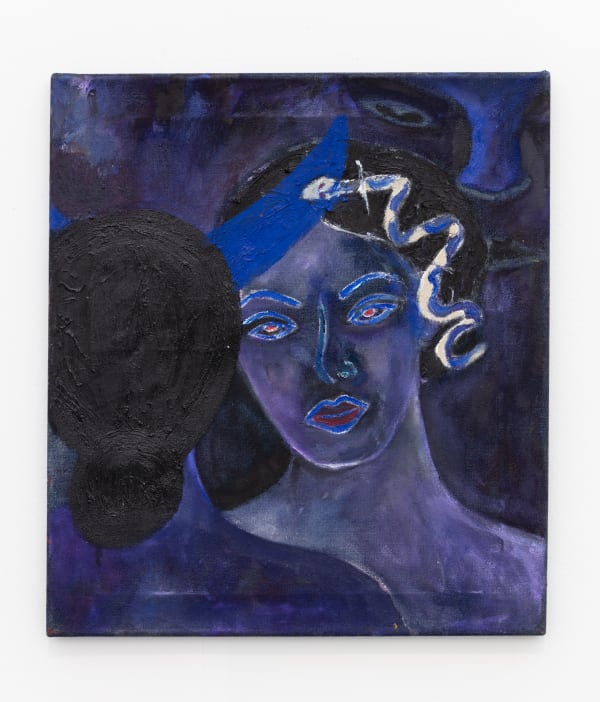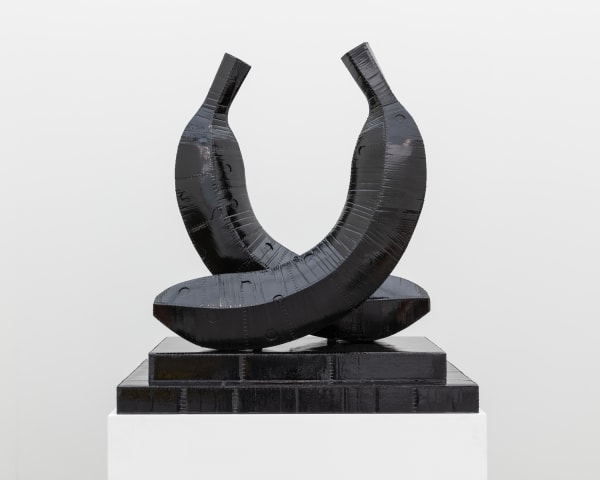UNTITLED, ART MIAMI BEACH 2019
Baert Gallery is pleased to participate to UNTITLED, ART Miami Beach 2019 with a presentation of new works by Simone Kennedy Doig & Jebila Okongwu.
Simone Kennedy Doig (b. 1994) spent the first eight years of her life in East London, before moving to Trinidad with her family. She later returned to her childhood borough to complete her studies and decided to stay. Hybrid identity as the consequence of migration is the most important theme in Kennedy Doig’s painting. The second is women: their subjectivity, autonomy and mutual relations. Her realistic, narrative paintings feature a wide range of saturated colours, making the experience of depicted scenes much more intense. Such use of colour, as well as an illustrative, often simplified approach to figure, evoke associations with Latin American painting. Kennedy Doig uses the medium to interpret everyday life, especially that characteristic of her local area, East London, housing a large Trinidadian community. The artist depicts scenes from local bars, crowded streets, or public restrooms, paying special attention to the neighbourhood’s fashion and customs.
Jebila Okongwu (b. 1975) critiques stereotypes of Africa and African identity and repurposes them as counterstrategies, drawing on African history, symbolism and spirituality. One of his preferred materials is banana boxes; their tropicalized graphics articulate an ‘exotic’ provenance, much like the exoticization of African bodies from an ethnocentric perspective. When these boxes are shipped to the West from Africa, the Caribbean and South America, old routes of slavery are retraced, accentuating existing patterns of migration, trade and exploitation. In his series entitled ‘Divination Paintings’, Okongwu engages with the multi-dimensional realities of traditional African art, a domain that includes legends, myths, ancestors, spirits, death and the cosmos. By creating a process which involves randomly applying triangles of banana box cardboard onto canvas, the artist takes on a role similar to that of the shaman and manipulates random events to transcend his own ego by relaying coded information (and possible revelations) from a sentient cosmos. The graphic elements on the boxes are broken down and reformed to create new visual structures and shimmering optical fields. Having developed a distinct aesthetic by working solely with collage for several years, Okongwu has recently returned to painting. The visual effect of collage is recreated with oil paint on linen but the artist now has more control of color and tone by mixing the paint. Working with a fluid medium and bristle brushes lends a sensuality to the surface of the work that was not possible with collage and he is now able to subtly alter the logos and texts which are printed onto the boxes, emphasizing both the sociopolitical and personal narratives present in the works. Okongwu’s series of ‘Banana Sculptures’ consist of formal arrangements of the tropical fruit and playfully subvert the ideals of high Modernist sculpture. He thus reclaims the stolen legacy of African art from the Cubists and reproposes his sculptures as totems or sacred objects representing spirit beings. The works are initially sculpted from sections of cardboard which are hand-stitched together and then cast into bronze. By way of this archaic artistic process, Okongwu redefines temporal and spatial dimensions and the ethereal quality of the spirit world is materialized and made permanent.
-
 Simone Kennedy DoigMonday Morning, 2019Oil and distemper on canvas
Simone Kennedy DoigMonday Morning, 2019Oil and distemper on canvas -
 Simone Kennedy DoigSounds of Soca, 2019Oil and distemper on canvas
Simone Kennedy DoigSounds of Soca, 2019Oil and distemper on canvas -
 Simone Kennedy DoigArapita Avenue, 2019Oil on canvas
Simone Kennedy DoigArapita Avenue, 2019Oil on canvas -
 Simone Kennedy DoigBlue Devil (Reflection), 2019Oil on denim
Simone Kennedy DoigBlue Devil (Reflection), 2019Oil on denim -
 Jebila OkongwuMr. Jebila, 2019Oil on wood (two panels)
Jebila OkongwuMr. Jebila, 2019Oil on wood (two panels) -
 Jebila OkongwuDivination Painting No. 14, 2018Oil on linen
Jebila OkongwuDivination Painting No. 14, 2018Oil on linen -
 Jebila OkongwuStudy for Banana Sculpture No. 24, 2019Banana boxes, nylon thread, polyurethane foam, fiberglass, epoxy resin, pigment and wood
Jebila OkongwuStudy for Banana Sculpture No. 24, 2019Banana boxes, nylon thread, polyurethane foam, fiberglass, epoxy resin, pigment and wood -
 Jebila OkongwuRelief No. 7, 2010Fiberglass, pigment, wood and polyurethane foam
Jebila OkongwuRelief No. 7, 2010Fiberglass, pigment, wood and polyurethane foam










